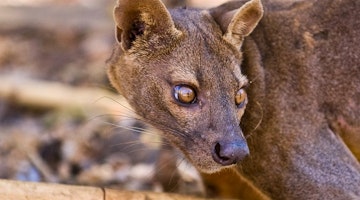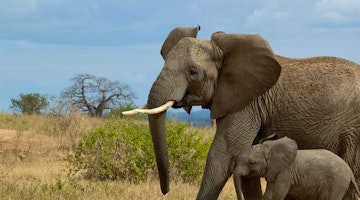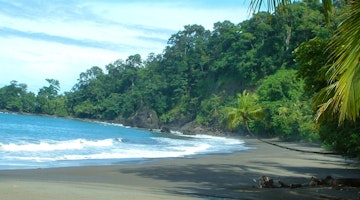| Contact us |
Best Time To Visit
When to go
Some areas of Chile can be visited all year round. Santiago, Valpariso and the Central Valley enjoy a Mediterranean style climate. Patagonia in the south is best visited between October and April, with the peak months being December to February, though even in these months, the weather can be unpredictable. In the Atacama days are generally sunny but can cool down considerably in the winter evenings of May to August. Easter Island has a subtropical climate. The wettest month is May and the warmest months are from January to March.
.jpg)
Getting there
There are direct flights on British Airways from London Heathrow to Chile five times per week. Alternatively there are daily departures with stopovers in European hubs, and routes from regional airports around the UK.
Time Zone
GMT -4 hours / Easter Island GMT -6 hours
Visas
British passport holders do not require a visa to enter Chile.
Health
There are no compulsory vaccinations required to enter Chile. Always consult your doctor at least six weeks before travel and refer to this useful NHS website - Fit For Travel - for details of recommended vaccinations for Chile holidays.
Things To Do
- See flamingos in the Atacama Desert
- Catch the sun setting over the Moai statues on Easter Island
- Enjoy a lamb BBQ and a spectacular horse ride
- Be awestruck by the dramatic granite pillars of Torres del Paine National Park
- Take an Australis Expedition cruise to see the Pia Glacier close up
- Book a day trip to the Maipo Valley for wonderful wine sampling
Chilean Wine - Peppery reds & spicy whites
Independent, award-winning wine writer and communicator, Sarah Ahmed, first visited Chile in 2002. Six years later, when she was asked to return to judge the Annual Chile Wine Awards, she was delighted to find a broader, more exciting portfolio of grape varieties, plus a host of new regions already firing on all cylinders. Here Sarah shares her knowledge of Chilean wines.
“Bounded by the Pacific Ocean to the west, the snow-capped Andes to the east, desert to the north and chilly Antarctic influences to the south, it’s not surprising that long, thin Chile has an exciting diversity of climates - and a correspondingly wide number of wine styles” says Sarah.
“The country has long produced a choice of well-structured, deep fruited reds, particularly Cabernet Sauvignon. Today, the best wines are from the cooler regions such as Elqui, San Antonio and Limari. They are deliciously juicy with lots of pepper and spice, quite European in style. And if your taste is for white wine, you can’t beat the Sauvignon Blanc, especially those from Leyda, Limari and Elqui; the rarer, spicier Sauvignon Gris is worth a look too.
Chile is known for its value for money entry level wines - it’s one of the few countries which can make good but affordable Pinot Noir. But don’t be fooled into thinking it’s a one trick pony - it produces some reassuringly (sometimes eye-wateringly) expensive wines too, but as a rule, I think it’s safe to say that you definitely get more bang for your buck with Chilean wines.
Almost everyone visits Santiago on a visit to Chile, which is within easy distance of some of the country’s oldest and best wineries along the Maipo wine route. Out of town, if there’s one winery I’d visit, it would be Matetic in San Antonio. It’s a cutting edge, family-owned estate which is farmed organically. Not only can you taste some of Chile’s most characterful wines here, you can also tour the stunning winery and dine at the restaurant which is highly recommended by yours truly!”
Visit the Wine Detective's website www.thewinedetective.co.uk
We can incorporate a wine trip into most of our holidays to Chile. Let your consultant know that you'd like to include wine tasting when you are planning your holiday. The Maipo Valley is the closest wine area to Santiago, but also consider the Casablanca Valley and the Colchagua Valley.
FAQ
Latin America travel specialist Lisa Rudkin answers questions about travel in Chile to help you decide if this is the right holiday destination for you. She is passionate about the country and is happy to share her knowledge and expertise one-to-one. Contact us for advice or to plan a holiday to Chile.
Tell me why there’s such a buzz about holidays in Chile at the moment?
I love the breathtaking scenery of Chile. The country has more than its fair share of open spaces, beautiful lakes, majestic glaciers, sunsets, dramatic night skies, picturesque valleys, snow capped volcanoes and striking red sands in the desert. Aside from this beautiful scenery a visit to Chile offers a fascinating insight into indigenous culture, great tasting food and famous fine wines. If this sounds appealing then Chile is definitely for you!
Is it worth spending time in Santiago?
Santiago is the gateway city to Chile and usually spending a night here on arrival and one night before departing is necessary in order to work with the flights. There are some great hotels in Santiago; boutique and contemporary, and there are lots of excellent restaurants to try out. Unless you are considering skiing nearby, two nights is usually sufficient time here as there are so many highlights to explore elsewhere in the country!
How do we get there?
The International airport in Chile is Santiago and British Airways direct service from the UK commences in January 2017. Other connections possible from the UK are via Madrid with LAN Airlines or Iberia; via Sao Paulo with TAM; via Miami with British Airways or via Paris with Air France.
What’s the best way to travel around the country?
Chile has over 4,000km of coastline stretching from the north down to the south so getting around is often by aircraft. If you are also visiting Argentina’s lakes then you can cross by land and/or by boat which is a popular choice, and rightly so as the scenery is breathtakingly beautiful.
See example Chile holidays and tours
Is Chile a safe country to travel around?
Yes but as always it is wise to be as diligent as you would be in any country in the world. For instance don’t wear expensive jewellery, flash expensive items or cash and be as sensible as you would be in any foreign country which is unfamiliar to you.
Is English widely spoken in Chile?
The national language is Spanish although English is widely spoken, particularly in the hotels and areas we feature.
What is the weather like?
The climate in Chile varies with the terrain, for instance, the north is home to the world’s driest desert, the Atacama, and temperatures average 17°C in July (winter) to 28°C in January (summer). The central region including Santiago and the Central Valley wine region has a Mediterranean climate, however the seasons are reversed.
In the south, the climate can be unpredictable, sometimes rainy yet with bright blue skies. I would definitely recommend taking a windproof jacket when visiting Torres del Paine. Generally speaking Chile can be visited all year round but I would advise visiting Patagonia between October and April. The peak months are December to February when you need to book early to secure your first choice of accommodation.
Is tap water safe in Chile?
Yes, although we recommend drinking bottled water to avoid the risk of getting an upset stomach.
What is the food like in Chile?
Food in Latin America is delicious and Chile is certainly no exception! I loved the fantastic seafood, grilled meats, stews, empanadas (small pasties which choice of filling), corn, beans, potatoes and tropical fruit are popular, as is the pebre, a Chilean pepper salsa served with bread or added to almost any dish! I particularly loved the BBQ lamb in Patagonia. Not forgetting the excellent wines produced in the now world famous Central Valley!
What currency does chile use?
The Chilean Peso is the locally currency and US Dollars are also widely accepted.
Can currency be changed easily?
Most hotels exchange currency and travellers cheques and there are many ATM machines at the airports and main cities/towns.
What would your top tip for a holiday in Chile?
If you sit on the left hand side of the plane on southbound domestic flights and the right hand side on northbound domestic flights, you have a good chance to see the Andes mountain range. The other way around you get to see the Pacific Ocean.
When visiting Atacama or Putre, remember there are areas of high altitude. Symptoms of altitude sickness can include headaches, dizziness, nausea and fatigue. In order to help the body adjust and alleviate these symptoms, it’s recommended that you fully relax on arrival, drink plenty of bottled water and choose light meals and eat them slowly. The local people also recommend drinking coca tea which is served in most hotels and restaurants. An additional tip; you may need sugar in the coca tea as it is a bit of an acquired taste!
Kristen Lanskail-Morris
Travel Specialist
Travel Guides
Looking for inspiration?
You'll find expert travel guides, holiday ideas and insider tips now on the Rainbow blog

Top 5 First Time Safari Destinations

10 Strange Animals and Where to Go to See them


Salar De Uyuni - The World's Largest Salt Flat


Top five South Africa Safari lodges

Sustainable Tourism In Corcovado National Park, Costa Rica

Why Choose Us?
Passionate travel experts
- We've been leading wildlife travel since our first South Africa tours over 25 years ago
- Our Travel Specialists have lived in their specialist area for years
- We work with local guides to immerse you deeper in our diverse range of experiences
Personal & tailor-made
- You'll speak to your own expert who'll share their first-hand knowledge
- We'll make your itinerary seamless with 24/7 emergency contact available
- Your Travel Specialist will listen to ensure you have the best chance of seeing the wildlife you love
Responsible by nature
- We take care to actively contribute to the conservation of environments we visit
- For select countries, we make a charitable donation on your behalf when you make your booking
- We've partnered with conservation experts and NGOs to curate responsible tours
For the latest travel advice from the Foreign, Commonwealth and Development Office check www.gov.uk/travelaware




